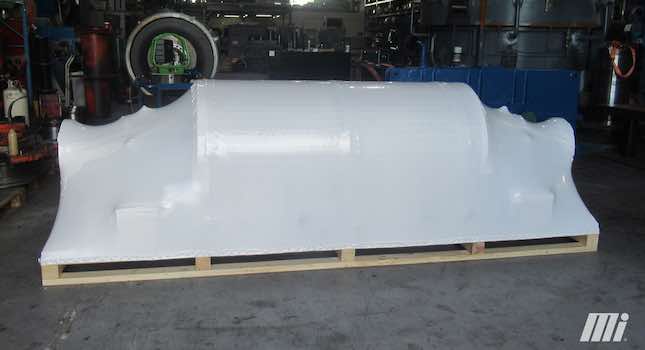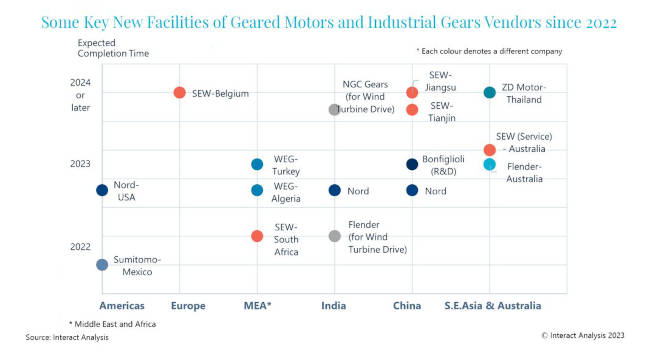Installing graphite metal alloy bushings in an stock tank agitator helped an Ontario pulp mill save tens of thousands of dollars in maintenance costs and unplanned shutdowns to fix broken bushings.
Graphite
Since installing Graphalloy, graphite metal alloy bushings in an unbleached brown stock tank agitator, Marathon Pulp Inc. annually saves up to $20,000 in normal maintenance costs and prevents unplanned shutdowns to fix broken bushings, which cost about $300,000 in lost income.
Stock tank agitators present an especially challenging bushing application because of the corrosive and abrasive nature of the stock. Marathon Pulp’s original bushings wore so much that they always had to be replaced at annual maintenance inspections. Often the entire bushing assembly had to be replaced as well. Occasionally bushings failed between annual inspections, causing a costly emergency shutdown.
The company has now replaced the old bushings with Graphalloy, a special proprietary grade of self-lubricating graphite-metal alloy bushings. These experience much less wear in the harsh brown stock environment and do not need to be replaced yearly. Not one of these bushings has failed in the two years they have been used.
Marathon Pulp Inc., Marathon, Ontario, is a Tembec/Kruger Company. The parent company, located in Temiscaming, Quebec, is a major Canadian forest products company. Its pulp group consists of six business units, with products divided between Kraft pulp, specialty chemical cellulose pulp, high yield pulp and fluff pulp.
Marathon Pulp is a Kraft pulp operation producing 525 tons per day. The company’s end product is baled bleached pulp that customers use to make coated papers, food packaging, specialty papers, and so on.
Agitating the stock
After brown stock is washed it is pumped into an unscreened stock chest where it is diluted to a four percent consistency. Marathon Pulp has four of these tanks. Each holds 10,000 pounds of stock, which is at a temperature of 130 to 160 degrees F at this point. From this chest the stock is pumped to the 3 stage brown stock screen room where impurities (sand, shives) are screened out. It is then thickened by the brown decker and pumped to the brown stock high density.
The stock is then diluted to 3.5% consistency and pumped to the screened brown stock chest from there it is pumped to the bleach plant.
After the bleach plant the stock is diluted to 3.5% consistency and pumped to the unscreened bleach chest. Next the stock is pumped to the 5 stage bleach cleaners and then thickened at the bleach decker and pumped to the screened bleach high density. The stock is then diluted to a 3.2% consistency and pumped to the screened bleach chest and then from there is pumped to the two pulp machines. The stock is dewatered at 2 cylinder moulds and fed through 3 press sections and then sent to the Flakt Dryers and then baled at the layboy, pressed and wrapped and sent to pulp storage.
While the brown stock is in the various chests, it must be kept circulating. Many of the chests are equipped with Alexander Fleck 60-inch propeller agitators for this purpose. These are horizontal, side-mounted devices with the motor positioned outside the chest. The shaft coming off the motor goes through a right angle gearbox, through some packing at the wall of the stock chest, and continues inside the chest.
There, the 12-foot shaft connects to a three-blade propeller through a spider arm assembly. The shaft is stainless steel, and because it is submerged the use of a ball bearing isn’t possible. Instead the spider assembly contains a housing with
“The agitator is a critical piece of equipment,” says Rick Manuel, fibre unit maintenance leader at Marathon Pulp. “If it breaks, it affects consistency of the stock, and slows the flow to the rest of the plant.” Fortunately, the agitators, which were built in 1945, have worked very well, with one exception. “The only problem is that the bushings wear out too quickly, and sometimes fail between annual inspections,” Manuel adds.
The original bushings were made of Ryertex phenalic, a fibrous material that could not withstand the abrasiveness of the stock. It would swell with water, causing the bushing and sleeve to wear out. Replacing these parts meant shutting down the process upstream of the stock chest, draining the tank, and calling in a vacuum truck to remove the remainder of the stock that couldn’t be pumped out. Then the chest had to be ventilated to cool it down.
And since it is a confined space, maintenance personnel must go through a special vessel entry procedure involving a great deal of testing to make sure it is safe to enter.
“This took two mechanics a couple of days and normally was done once a year during a one week shutdown,” Manuel says. Often the worn bushing required the replacement of the entire housing, at a cost of $15,000 to $20,000. “That was an expensive and involved process, but it was ten times worse when it wasn’t planned,” Manuel adds. “It takes 24 to 36 hours to replace a bushing on an emergency basis and each day the machines are down we lose approximately $10,000 per hour.”
Successful Test
In a trade journal article, Manuel read about bushings made of graphite-metal alloys that take advantage of the special properties of graphite. A graphite structure can be compared to a deck of cards with individual layers able to easily slide off the deck. This phenomenon gives the material a self-lubricating ability that is matched by no other material, making external lubricants unnecessary. The graphite matrix can be filled with a variety of impregnants to enhance chemical, mechanical and tribological properties.
After Manuel sent Graphite Metallizing Co.
“This stock is high in alkalinity and very abrasive, so its bushings wore out the fastest,” he explains. One Graphalloy bushing was installed in May 1999. It ran well for a full year and then was inspected during the May 2000 scheduled maintenance. There was only minor wear. Manuel had already purchased a replacement bushing and went ahead and installed it. But the first Graphalloy was in such good shape that he kept it to use as a spare.
The success of the bushing in this, the worst application, led Manuel to install two additional Grade GM105.3 bushings on the agitators in the unscreened and screened bleach chests. These bushings have run perfectly since then, and Manuel expects to see little or no wear when they are inspected at the scheduled maintenance.
Next he plans to put a Graphalloy bushing on a different sized agitator used in the screened brown stock chest. He is also considering GRAPHALLOY throttle for use in the company’s high-density tower agitators during a scheduled maintenance planned for 2002.
Marathon Pulp management is pleased to have solved this challenging bushing problem. Each year the company does not have to replace bushings and housing, it saves up to $20,000 per agitator. And the performance of the bushings already in place gives confidence that they will not experience the cost of unplanned shutdowns, for this reason, in the future.



